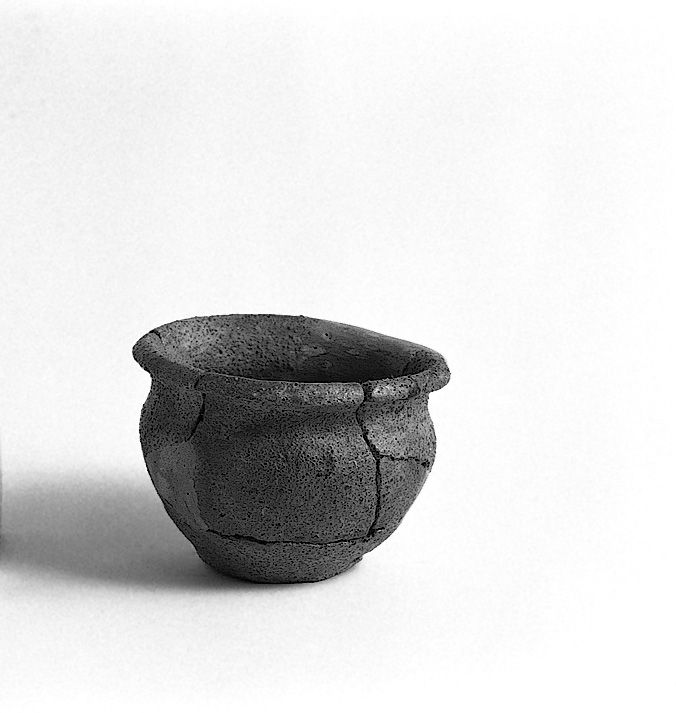
Etruscan Cetamura
Cup
Period | Etruscan |
Year | 3rd to first half of 2nd c. BCE |
Material | Cetamura Ceramic Fabric 3 |
Location | Structure K |
Cet. Inventory | Inv. C-97-105 |
This humble locally made cup was one of several ceramic offerings to the gods found inside the Etruscan kiln, Structure K, inserted when the kiln was first built and meant to insure that the load of brick, tile and loomweights would be fired successfully.
Prov. 74N/5E.31.1. Structure K. H. 5.3. Diam. of rim ca. 5. Wt. 88 g (restored). Munsell: 10YR 7/2 “light grey” Pres. location: Museo Archeologico del Chianti Senese, Castellina in Chianti
A small cup, almost complete, restored from eight fragments. Roughly made, probably by hand. No color coat: greyish-brown paste of a type common at Cetamura (Fabric 3), moderately tempered with small, rounded red and brown sandstone inclusions, slightly blackened by fire. Most of vessel recovered, found within lowest deposits of Structure K. Most complete vessel found within the kiln, probably a foundation deposit.
Similar examples, slightly larger, found in the late Hellenistic tomb of Colle Verdina, near Siena, and many examples from Hellenistic tombs at Populonia, slightly larger. The Populonia examples, each featuring three bosses or three vertical lines, have been conjectured to be measuring cups.
Dating: 3rd to first half of 2nd cent. BCE by form and context.
Bibl. Cristofani 1979, 50-51. Shepherd 1992, 163-165.




